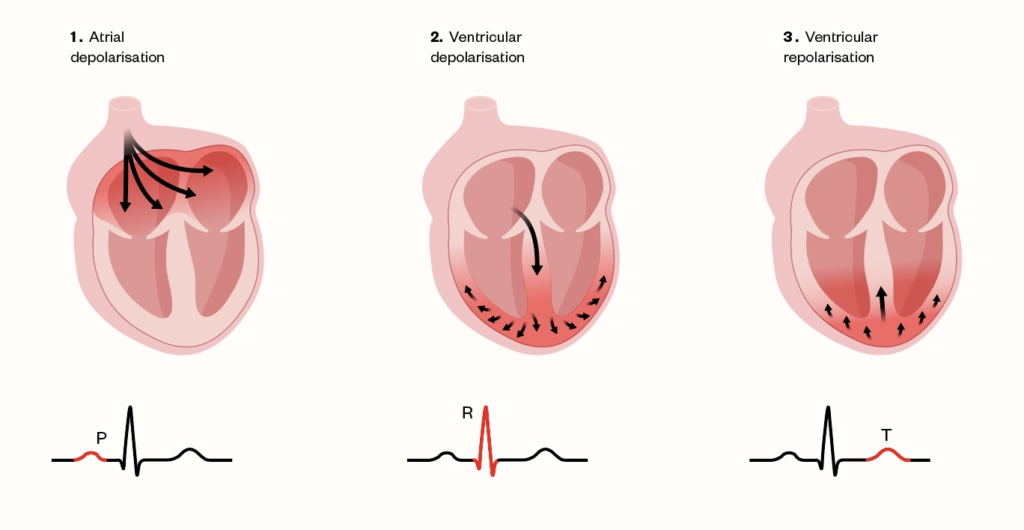Digitalis toxicity, also known as digoxin toxicity, is a potentially life-threatening condition resulting from an overdose of digitalis compounds, primarily digoxin. These compounds are commonly prescribed for heart conditions such as atrial fibrillation and heart failure. Due to their narrow therapeutic index, the margin between therapeutic and toxic doses is slim, necessitating vigilant monitoring.

Etiology and Risk Factors
Digitalis toxicity can manifest from acute overdose or chronic accumulation. Acute toxicity often results from intentional or accidental ingestion of large quantities, whereas chronic toxicity typically arises in patients undergoing long-term therapy. Factors contributing to toxicity include:
- Renal Impairment: Reduced renal function diminishes digoxin clearance, leading to accumulation.
- Electrolyte Imbalances: Hypokalemia, hypomagnesemia, and hypercalcemia enhance the drug’s effects on myocardial cells, increasing toxicity risk.
- Drug Interactions: Concomitant use of medications such as amiodarone, verapamil, and certain diuretics can elevate digoxin levels or potentiate its effects.
- Advanced Age: Elderly patients often exhibit decreased renal function and altered drug distribution, heightening susceptibility.
Pathophysiology
Digoxin exerts its therapeutic and toxic effects by inhibiting the sodium-potassium ATPase pump in cardiac cells. This inhibition leads to increased intracellular sodium, which in turn reduces calcium expulsion via the sodium-calcium exchanger, resulting in elevated intracellular calcium levels. The consequent increase in cardiac contractility can be beneficial in heart failure but may also precipitate arrhythmias when present in excess. Additionally, digoxin enhances vagal tone, leading to slowed atrioventricular conduction.
Clinical Manifestations
The presentation of digitalis toxicity is diverse, affecting multiple organ systems:
- Gastrointestinal: Nausea, vomiting, anorexia, and diarrhea are common initial symptoms.
- Cardiac: A wide array of arrhythmias may occur, including premature ventricular contractions, atrial tachycardia with block, ventricular tachycardia, and various degrees of atrioventricular block.
- Neurological: Patients may experience confusion, dizziness, delirium, and visual disturbances such as blurred vision or xanthopsia (yellow vision).
Diagnostic Evaluation
Diagnosis involves a combination of clinical assessment and laboratory investigations:
- Electrocardiogram (ECG): May reveal characteristic changes such as scooped ST segments, various arrhythmias, and conduction blocks.
- Serum Digoxin Level: While levels above 2 ng/mL are suggestive of toxicity, clinical correlation is essential, as symptoms can occur at lower levels, especially in the presence of predisposing factors.
- Electrolyte Assessment: Evaluating serum potassium, magnesium, and calcium levels is crucial, as imbalances can exacerbate toxicity.
Management Strategies
The approach to managing digitalis toxicity includes:
- Immediate Discontinuation: Cease digoxin administration upon suspicion of toxicity.
- Electrolyte Correction: Address hypokalemia or other electrolyte disturbances cautiously, monitoring for arrhythmias.
- Antiarrhythmic Therapy: Agents such as lidocaine or phenytoin may be employed to manage ventricular arrhythmias.
- Digoxin-Specific Antibody Fragments (Digibind): Indicated in life-threatening situations, such as severe arrhythmias, hemodynamic instability, or significant hyperkalemia.
Prevention and Monitoring
Preventive measures are paramount:
- Regular Monitoring: Routine assessment of renal function and serum digoxin levels, especially in high-risk populations.
- Patient Education: Inform patients about potential drug interactions and the importance of adherence to prescribed dosages.
- Electrolyte Management: Maintain electrolyte balance, particularly in patients on concomitant diuretic therapy.

